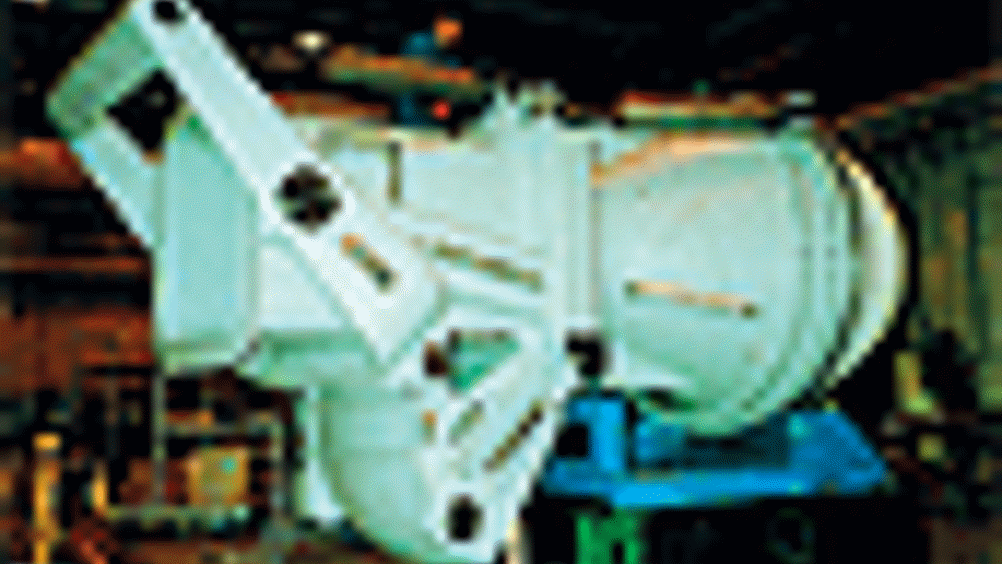Waterjet engine
Rolls-Royce has unveiled a new waterjet engine for naval, offshore and leisure markets that it claims offers more power, greater efficiency, reduced emissions and better manoeuvrability.

Rolls-Royce has unveiled a new waterjet engine for naval, offshore and leisure markets that it claims offers more power, greater efficiency, reduced CO2 emissions and better manoeuvrability for vessels.
The company’s Aluminium Waterjets division, based in Finland, developed the engine using advanced design, testing and production techniques to keep it light — at approximately 1,650kg — but powerful. Ari Hämynen, technical product manager, said: ‘The main challenge was to reduce weight, and at the same time keep the production cost as low as possible. To achieve this, we optimised the wall thicknesses using 3D design so as not to have too much unnecessary material, and analysed the strength of the components using FEM (finite element method). We also used CFD (computational fluid dynamics) flow analysis to examine the pressures inside the waterjet unit, which are very high when it is in use.’
Compared to previous products, the Kamewa FF67 features an enhanced steering nozzle, which allows vessels to go 2-3 knots faster through hard turns, and an improved reversing ‘bucket’, which gives higher reverse thrust of up to 65 per cent of forward thrust. These combined give improved steering, manoeuvrability and performance at high and low speed. It is around 10 per cent lighter than the previous design at the same size and is more economical to use, reducing CO2 emissions, which Rolls-Royce said is an ongoing goal of all its engine-development programmes.
The waterjet unit is an engine installed in a boat with an inlet tube through which water enters. Inside it is an impeller, which accelerates the water, and behind it a conical nozzle to form a homogenous water stream with a velocity of around 35m/s. It can expel thousands of litres in a second, depending on the power.
Behind the outlet nozzle is a new steering nozzle, developed from the Kamewa A3 series, which is controlled by the steering wheel to turn the water stream sideways. Hämynen said: ‘The improved steering nozzle is quieter and gives you better speed at turns.’
The reversing bucket is a device that is kept out of the water when moving forward but is lowered to turn the water stream forward when the boat needs to be slowed down or reversed. The novel design offers 16 per cent higher thrust in reverse than previous models.
Hämynen added: ‘There are some positions where the boat is not moving forward or backwards, you can control the boat in a similar way to flying a helicopter. You can rotate the boat on one spot, go forward or backwards slowly — you can control the boat very easily and continuously, without steps. We had a target to keep the reversing bucket small and light and at the same time improve performance to give more reversing thrust. We did our own design and carried out several small-scale tests with different test measurements and full-scale tests in real life with smaller waterjet units.’
The FF67 was launched in February at IDEX (International Defence Exhibition and Conference) 2009 in Abu Dhabi. Rolls-Royce supplied a previous model, Kamewa FF550 waterjets, for UAE Navy and UAE Coast Guard patrol boats.
Berenice Baker
Register now to continue reading
Thanks for visiting The Engineer. You’ve now reached your monthly limit of news stories. Register for free to unlock unlimited access to all of our news coverage, as well as premium content including opinion, in-depth features and special reports.
Benefits of registering
-
In-depth insights and coverage of key emerging trends
-
Unrestricted access to special reports throughout the year
-
Daily technology news delivered straight to your inbox










Water Sector Talent Exodus Could Cripple The Sector
Maybe if things are essential for the running of a country and we want to pay a fair price we should be running these utilities on a not for profit...